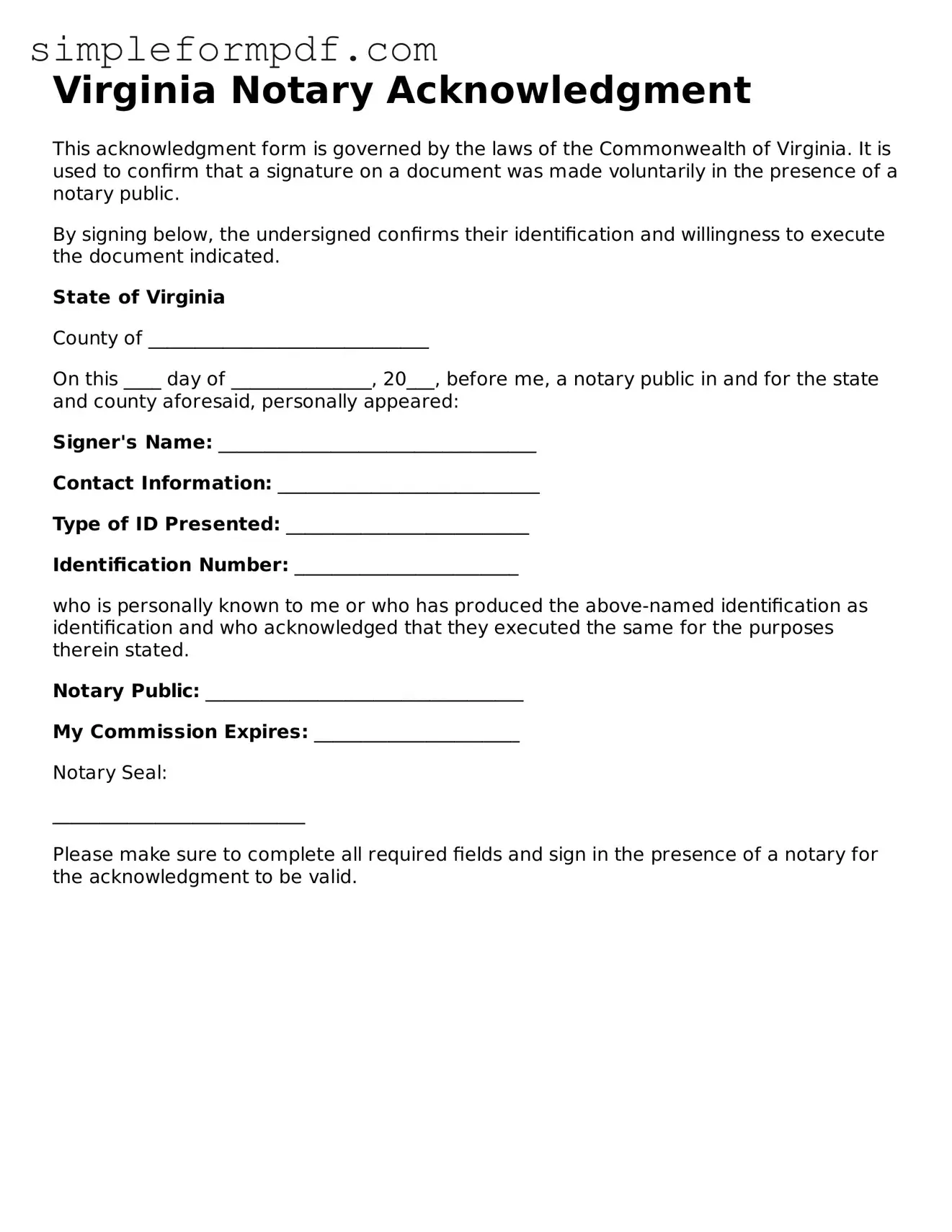Virginia Notary Acknowledgment
This acknowledgment form is governed by the laws of the Commonwealth of Virginia. It is used to confirm that a signature on a document was made voluntarily in the presence of a notary public.
By signing below, the undersigned confirms their identification and willingness to execute the document indicated.
State of Virginia
County of ______________________________
On this ____ day of _______________, 20___, before me, a notary public in and for the state and county aforesaid, personally appeared:
Signer's Name: __________________________________
Contact Information: ____________________________
Type of ID Presented: __________________________
Identification Number: ________________________
who is personally known to me or who has produced the above-named identification as identification and who acknowledged that they executed the same for the purposes therein stated.
Notary Public: __________________________________
My Commission Expires: ______________________
Notary Seal:
___________________________
Please make sure to complete all required fields and sign in the presence of a notary for the acknowledgment to be valid.
